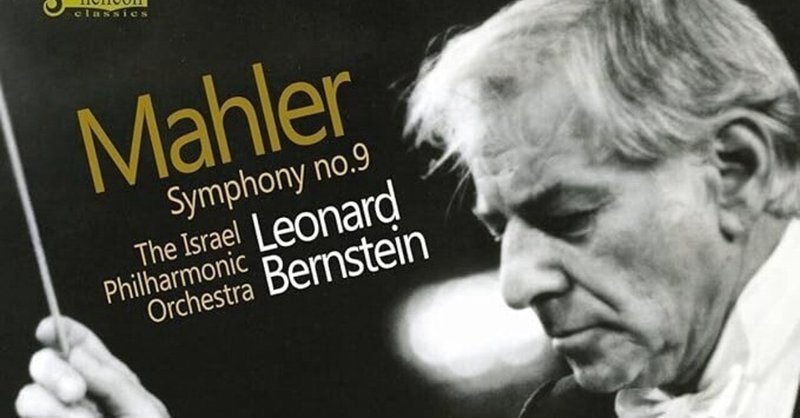
マーラーの音楽的集大成、交響曲第9番
西洋音楽史上の最高傑作、それはバッハの「マタイ受難曲」やモンテヴェルディの「聖母マリアの夕べの祈り」やベートーヴェンの「ミサ・ソレムニス」ではないか、と主張する向きが多いだろうということを十分承知の上で人類の宝を紹介します。
それはマーラーの交響曲第9番です。
マーラーの音楽は「開かれた」構造を持っているので、ベートーヴェンのような必然性を持ちません。
けれども、第1楽章だけは別格で、死の打撃の「突発」やカデンツァのような意外性の極みであるはずの部分も、ソナタ形式、調性音楽という古い器の中に新機軸を盛ったために至るところで生じている「きしみ」も、楽章を聴き終えてみると、絶対こうでなければならなかったのだという説得力をもって迫ってきます。
感動的なこの曲の終楽章も、意外性と必然性の一致、内容のシリアスさと技法的創意の一致という点では、この楽章に一歩も二歩も譲るところがあります。
この第1楽章こそは、どの大作曲家ですら生涯に一度限りしか恵まれえない奇跡的な霊感の産物だったのでしょう。
西洋音楽史全体を見渡しても、これほどの高みに達した音楽を、少なくとも私個人は他に知りません。
マーラーの交響曲は、彼自身の人生や思想が反映されています。第9番は、彼が最後に完成させた作品であり、自分の死や家族の不幸などに対する悲しみや諦観が表れています。
マーラーの交響曲第9番は、彼が1909年に作曲した最後の交響曲です。彼はこの曲を自分で初演することなく、1911年に亡くなりました。
全4楽章からなり、約70~90分かけて演奏されます。第1楽章と第4楽章はテンポの遅い音楽で、第2楽章と第3楽章はテンポの速い音楽です。
標題や歌詞を持たないにもかかわらず、「別れ」や「死」のテーマが全曲に貫かれています。これは、マーラーが自分の死や家族の不幸などに対する悲しみや諦観を音楽に反映させたからだと考えられます。
マーラーは過去の自作や他作から多くの引用をしています。これらは、過去の追想や別離の気分を高めるとともに、新しい音楽的な表現を試みるものです。
音楽的にも技術的にも難易度が高く、オーケストラや指揮者に高い演奏力を要求します。また、聴衆にも深い感動や感銘を与える作品です。
まさに、交響曲第9番こそマーラーの音楽的な集大成であり、人間の存在に関わる深いメッセージを伝えています。
オススメの名盤としては、以下の3つを挙げることができます。
• ヘルベルト・フォン・カラヤン指揮ベルリン・フィルハーモニー管弦楽団:カラヤンはマーラーの名手として知られており、この録音もその代表作です。ベルリン・フィルの豊かな音色とカラヤンの緻密な解釈が、この曲の悲しみと美しさを見事に表現しています。
• レナード・バーンスタイン指揮イスラエル・フィルハーモニー管弦楽団:バーンスタインはマーラーの伝道師としても有名で、この録音もその情熱的な解釈が光ります。特に第4楽章ではマーラーへの深い敬愛と追悼の思いが感じられます。
• ラファエル・クーベリック指揮バイエルン放送交響楽団:クーベリックはマーラーの晩年の作品において優れた録音を残しており、この録音もその一つです。クーベリックの自然な感性とバイエルン放送響の透明感のある響きが、この曲の革新性と古典性を見事に調和させています。
以上が、マーラーの交響曲第9番についての私からの解説です。ご参考になれば幸いです。

Mahler's musical culmination, Symphony No. 9
Many people would argue that the greatest masterpieces in the history of Western music are Bach's St. Matthew Passion, Monteverdi's Evening Prayer of the Virgin Mary, and Beethoven's Missa Solemnis. With full knowledge, I would like to introduce you to a treasure of humanity.
It's Mahler's Symphony No. 9.
Mahler's music has an "open" structure, so it does not have the same necessity as Beethoven's.
However, the first movement is exceptional, and even the most surprising parts, such as the "sudden" death blow and the cadenza, are a new innovation in the old instrument of sonata form and tonal music.
When you finish listening to the movement, the ``squeaks'' that occur throughout the movement come to you with a persuasive force that makes you realize that it absolutely had to be this way.
The moving final movement of this piece also yields a step or two in terms of the coincidence of the unexpected and the inevitable, the seriousness of the content and the technical ingenuity.
This first movement must have been the product of a miraculous inspiration that any great composer could only be blessed with once in his life.
Even in the entire history of Western music, I personally know of no other music that has reached such heights.
Mahler's symphonies are a reflection of his own life and thoughts. No. 9 is the last work he completed, and it expresses his sadness and resignation over his own death and the misfortunes of his family.
Mahler's Ninth Symphony was the last symphony he composed in 1909. He died in 1911 without premiering the piece himself.
It consists of four movements and takes approximately 70 to 90 minutes to perform.
The first and fourth movements are slow-tempo music, and the second and third movements are fast-tempo music.
Despite having no title or lyrics, the themes of "farewell" and "death" run through all the songs.
This is thought to be because Mahler reflected his sadness and resignation over his own death and the misfortunes of his family in his music.
Mahler makes many quotations from his own and other works. These pieces heighten the mood of his past reminiscences and separation, as well as his attempts at new musical expressions.
It is both musically and technically difficult, and requires high performance skills from the orchestra and conductor.
It is also a work that deeply moves and impresses the audience.
Indeed, the Ninth Symphony is Mahler's musical culmination, conveying a deep message concerning human existence.
The following three masterpieces are recommended.
• Berlin Philharmonic Orchestra conducted by Herbert von Karajan: Karajan is known as a master of Mahler, and this recording is a masterpiece. The rich tones of the Berlin Philharmonic and Karajan's detailed interpretation perfectly express the sadness and beauty of this piece.
•Israel Philharmonic Orchestra conducted by Leonard Bernstein: Bernstein is also famous as a Mahler evangelist, and this recording shines with his passionate interpretation. Especially in the fourth movement, you can feel the deep respect and mourning for Mahler.
• Bavarian Radio Symphony Orchestra conducted by Rafael Kubelik: Kubelik left behind excellent recordings of Mahler's later works, and this recording is one of them. Kubelik's natural sensibility and the transparent sound of the Bavarian Radio Symphony Orchestra perfectly harmonize the innovation and classicity of this piece.
This is my explanation of Mahler's Symphony No. 9. We hope for your reference.

よろしければサポートお願いします! いただいたサポートはクリエイターとしての活動費に使わせていただきます!
